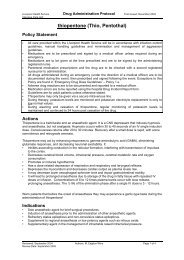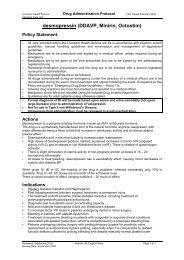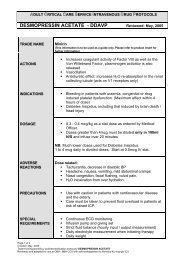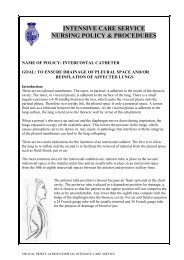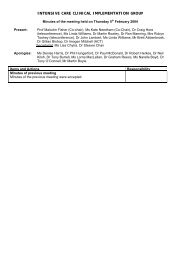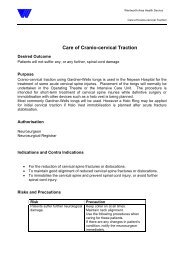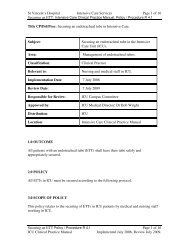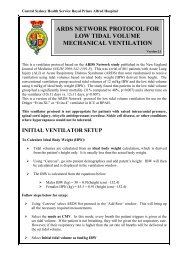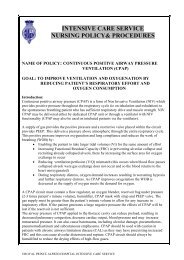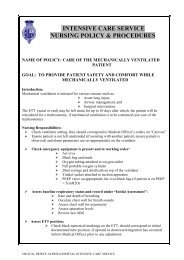A quick reference guide to haemofiltration and renal failure March ...
A quick reference guide to haemofiltration and renal failure March ...
A quick reference guide to haemofiltration and renal failure March ...
Create successful ePaper yourself
Turn your PDF publications into a flip-book with our unique Google optimized e-Paper software.
The haemofilter, otherwise known as ‘the kidney’, is the ‘heart’ of<br />
the <strong>haemofiltration</strong> process. It is here that blood is filtered,<br />
with the removal of water <strong>and</strong> dissolved solutes.<br />
There are two types of filters, the parallel plate filter <strong>and</strong> the<br />
hollow fibre filter. The hollow fibre filter is used predominantly<br />
in this ICU, <strong>and</strong> so it will be the feature of this discussion.<br />
These haemofilters are mostly made from polymers, <strong>and</strong> are<br />
constructed of porous hollow fibers. The large pores allow for the<br />
passage of larger molecules along with increased volume of fluid<br />
(Dirkes 2000:583)<br />
The fibres are bundled <strong>to</strong>gether in a cylindrical tube, <strong>and</strong> are<br />
encapsulated so that they are free at either end of the tube.<br />
This allows blood <strong>to</strong> enter <strong>and</strong> exit the hollow lumens, but not <strong>to</strong><br />
circulate around the outside of the fibres.<br />
As mentioned previously, molecules are measured in Dal<strong>to</strong>ns.<br />
Commonly, the average filter pore size is 30, 000 Dal<strong>to</strong>ns. The<br />
table below represents common molecular weights. Only very<br />
small molecules pass freely through the filter.<br />
28




